How do trains turn around? Passenger trains mostly reverse back into the opposite direction at the line’s end. Freight trains, on the other hand, are usually pulled by locomotives.
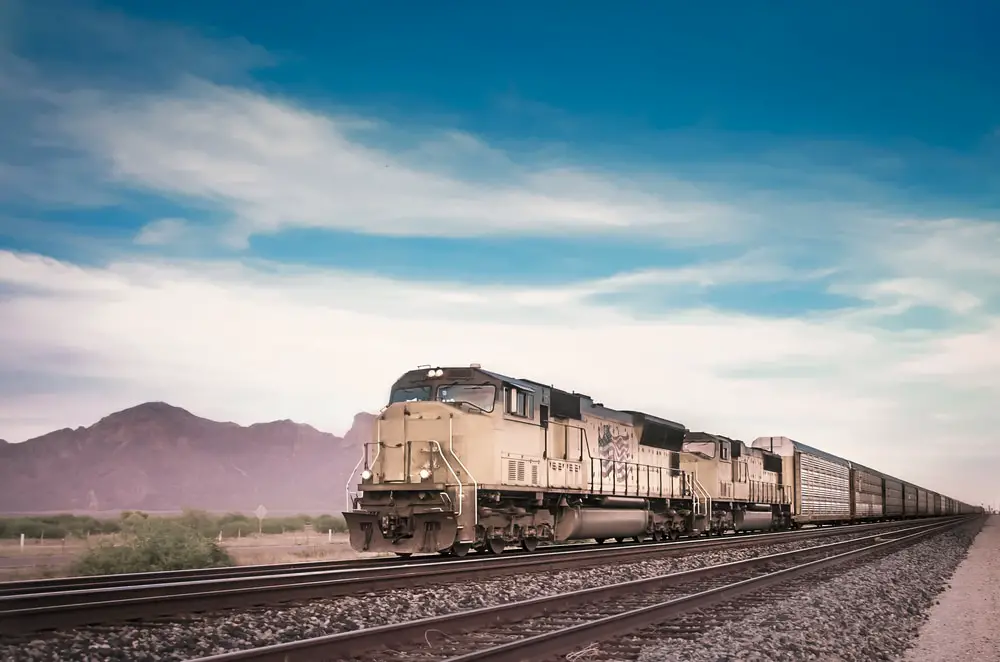
Cars essentially make a U-turn to turn around. On the other hand, airplanes turn their wheels to tunr on the ground. But, what about trains? How do trains turn around?
We all see trains having a somewhat straight track. And since they’re so long, how do they return to where they came from?
Do they have a roundabout or do they run backward?
Trains can reverse on the tracks. But it’s not the kind of “reverse” you imagine it to be.
It all starts with the “scrub and shove”. Then, they go through a “wye track.”.
These are mostly applicable to passenger trains, though.
The processes for freight trains are usually different and have other options.
Here’s a comprehensive breakdown of how trains turn around.
How Passenger Trains Turn Around
Passenger trains go through a process before turning around, much like airplanes, they undergo a full cleaning and replenishing.
It’s not an incredibly simple procedure, too.
Yes, there are machines involved in the process, however, railroad workers also must work swiftly as passenger trains comply with a schedule.
Here’s what goes down in the whole train turning operation:
What is a Scrub and Shove?
The process starts the moment all passengers get off the train. From here, the train’s staff do a sweep or full inspection.
They make sure everyone has departed and no one has left anything behind.
Once everything is cleared, the train undergoes a massive car wash.
Here, the exterior of the train gets doused with water. Then, it also passes through enormous rollers for further cleaning.
This phase is referred to as the “scrub”.
Apart from the machine, the train’s staff also do interior cleaning, they scrub and clean the windows.
Train inspectors also look over the train for signs of wear and tear, which can span from dents to scratches to debris along the rail track.
Additionally, they also do an inspection of the wheels of the train and they inspect for flat or weak locations that may need repair.
From here, the necessary staff performs the repairs accordingly or note them down for future repair as part of a schedule.
Right after the scrub phase, the trains get “shoved”, where it reverses.
And from here, it may go in the other direction for its next journey. However, the shoving process is mainly done by doing a “wye” or using a “wye track”.
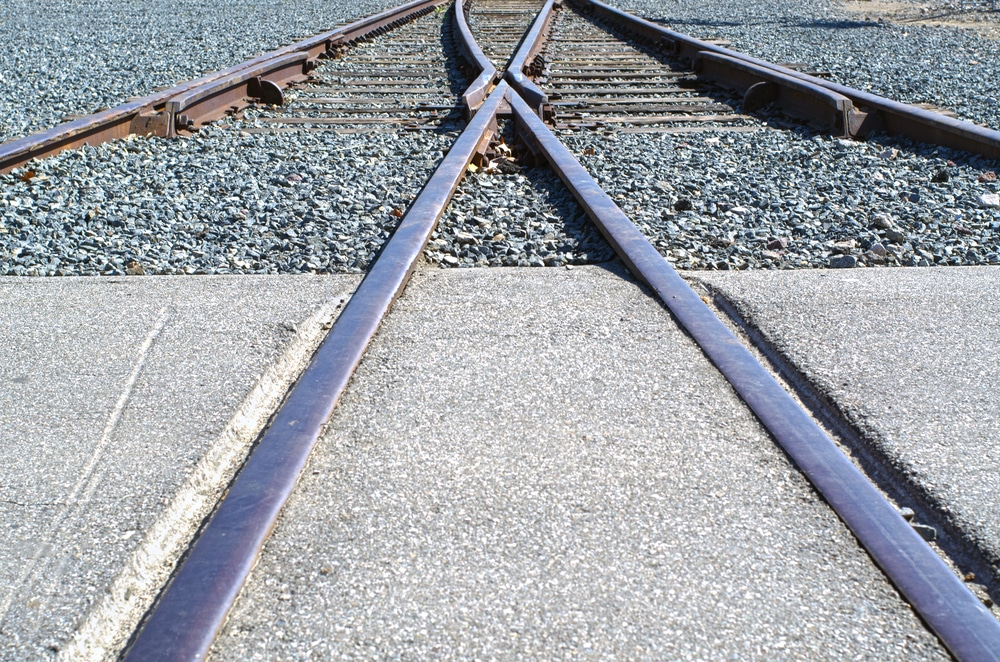
What is a Wye Track?
This is among the most convenient ways of turning trains. And this method is also used by Amtrak.
Wye tracks do not rotate or turn the locomotive in particular. Instead, they rotate the whole train completely.
Confusing? Here’s another way to look at it: It’s like how you might make a U-turn with a vehicle. You reverse the car while steering to the left.
Thereafter, you drive ahead steering to the right. And, that’s it, you’ve finally turned around.
Now, you might wonder, why do they have to reverse the whole train completely? Wouldn’t that take so long? Why can’t they just reverse its locomotive?
The majority of the seats would be facing the opposite way if trains don’t use a wye track.
If you were a passenger, it could be a bit uncomfortable.
So what actually is wye track? A wye track is a triangle-shaped (or like the letter Y) junction of railway tracks, hence the name
It contains switches at each of its corners. This framework goes as follows:
- The train runs down the first leg (or half) of the wye track.
- From here, it reverses over the next leg.
- Then finally, it continues forward along the last leg, making exactly three turns.
Many other passenger terminals in the USA employ wye tracks for their trains.
Some include Memphis Union Station, LA Union Station, and the St. Paul Union Depot.
Now, what do other trains and terminals use if they don’t employ wye tracks?
Some trains can move in both directions or are “bi-directional”.
What are Bi-Directional Trains?
Bi-directional trains can operate from each of their ends. Here, the driver simply walks from end to end of the train to control and determine the direction of travel.
There are also trains, mostly modern moderns ones, that are “self-driving”. Self-driving bi-directional trains are deactivated and activated by the machines instead.
In this scenario, the driver doesn’t have to manually walk to get this done. These kinds of trains also can have flippable passenger chairs too.
As you may expect, this method is much quicker. But, it is also more expensive and these machines require additional tracks.
They also need more machinery, and therefore more maintenance work.
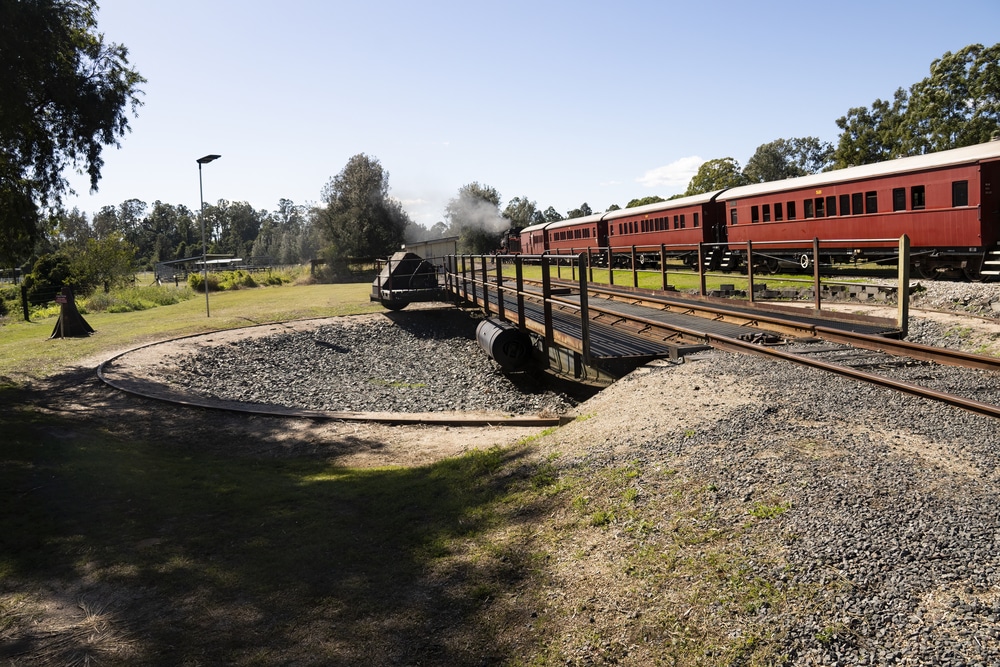
How Do Freight Trains Turn Around?
Freight or cargo trains turn around differently.
Remember, locomotives pull the freight wagons and when they need to turn, they employ the following methods.
Turntables
Railway turntables, sometimes known as wheelhouses, change the course of locomotives.
A turntable is utilized when it’s just the locomotive alone that has to turn. Not the whole train. It changes the way the locomotive faces.
Train companies place these when a wye track would be impractical or too expensive to build.
However, this is also helpful in times when turning the locomotive is simpler than maneuvering it through a busy yard.
By far, turntables are the cheapest method for reversing trains completely. But, this equipment is quite small, around 120 feet.
Therefore, it would not be useful for larger heavier locomotives and trains.
Balloon Loop
Other names for this turning method include reversing loop or turning loop.
This method enables a train to turn without stopping and balloon loops are usually found on streetcars and single-ended trams.
They are heavily used in Europe’s train system as they are a cost-effective solution as it can increase line capacity.
However, this system takes a lot of space on the track, even more than wye tracks. This is why the wye track is better for metropolitan areas.
Reversing Star
Another way that trains can turn around is using the “reversing star” track. Or the Stella di inversione.
It’s a pretty unique-looking track arrangement, too.
However, these are very rare nowadays. They were a popular sight on Italian trains in the 1990s.
A reversing star is a set of railroad lines laid out in the form of a star. The design makes it possible to reverse asymmetric rail vehicles around confined areas.
In terms of functionality, it works somewhat similarly to a turntable or balloon loop.The reversing star has five legs.
Two of these legs connect to its primary track and the three remaining legs are pretty much dead ends or supplemental tracks.
The star’s first leg is reached through the access track, where the mainline locomotive arrives. Then, the locomotive returns to the second leg when the points are changed.
Afterward, it proceeds towards the next leg. From this point, it reenters the leg of the mainline.
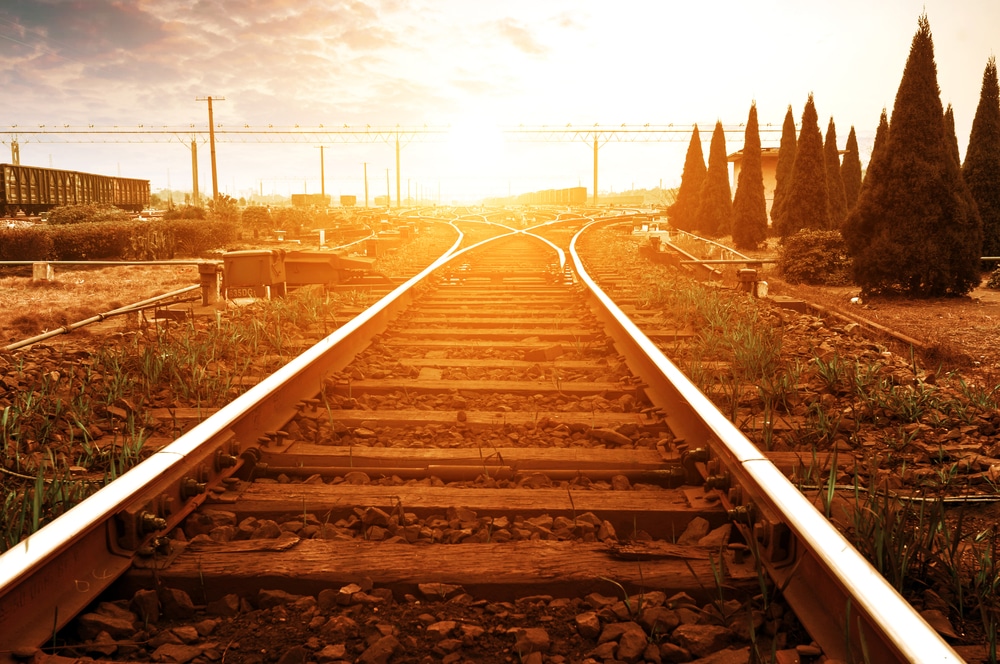
How Long Does it Take For Trains to Turn Around?
As you can see, a lot goes on behind the scenes in turning the train around.
So, you might also be wondering how long it takes. The whole wye track process takes approximately 35 to 60 minutes. From cleaning and maintaining to turning the train.
Bare in mind, that this process can take a lot longer if maintenance issues are found.
However, some self-driving bi-directional trains can take about two minutes.
Turning a train around is a very important process, for instance, if the wye-ing takes too long, the train that follows must wait.
Therefore, it creates a delay for other trains too and creates a domino effect.
How Do Trains Turn Around Before The End Of The Line?
Let’s say that a train experiences malfunction before reaching the endpoint. What happens? They turn around by shunting or switching.
Shunting is also common for trains that need to be repositioned. Ultimately, the purpose of shunting is to give way to other trains and reduce delays.
Even a momentary hiccup can lead to many train delays. In fact, in some cases, train controllers request a delayed train to go faster this way, they can keep schedules on track.
Who Turns The Trains Around?
Each member of staff plays a part on a moving train. But, there are railroad jobs that take more part in turning the train around.
These are the following:
Train Drivers
Train drivers are the people who drive the train. So, naturally, they are on the top of this list.
But, surprisingly, they don’t always get to decide on where the trains stop. It’s the train controller who is responsible for guiding the trains in the right direction.
Train Controllers
These individuals notify the drivers of where the train should go and stop.
Locomotive Maintenance Engineers and Technicians
Locomotive engineers are one of the highest-paid jobs in the railroad industry. These people look out for all the train components and ensure they are operating properly.
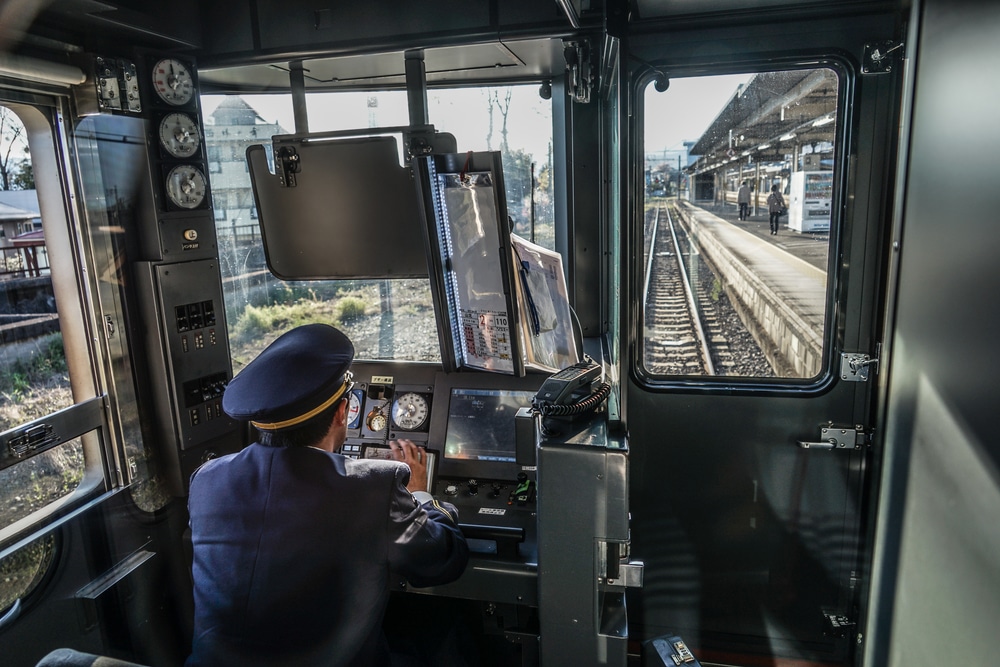
How Do Trains Turn Around: The Bottomline
Most passenger trains like Amtrak turn around using a wye track, but before this, the trains undergo the scrub and shove.
This ensures a clean, maintained, and ready-to-go train. It can be quite difficult to picture this point. Fortunately, you can watch this video from Amtrak to understand what I am talking about.
There are also other turning systems that trains use, these include the turntable and the balloon loop, which are mostly utilized by freight trains.
Speaking of freight trains, I wrote an article on how fast they go, you can find it here.

